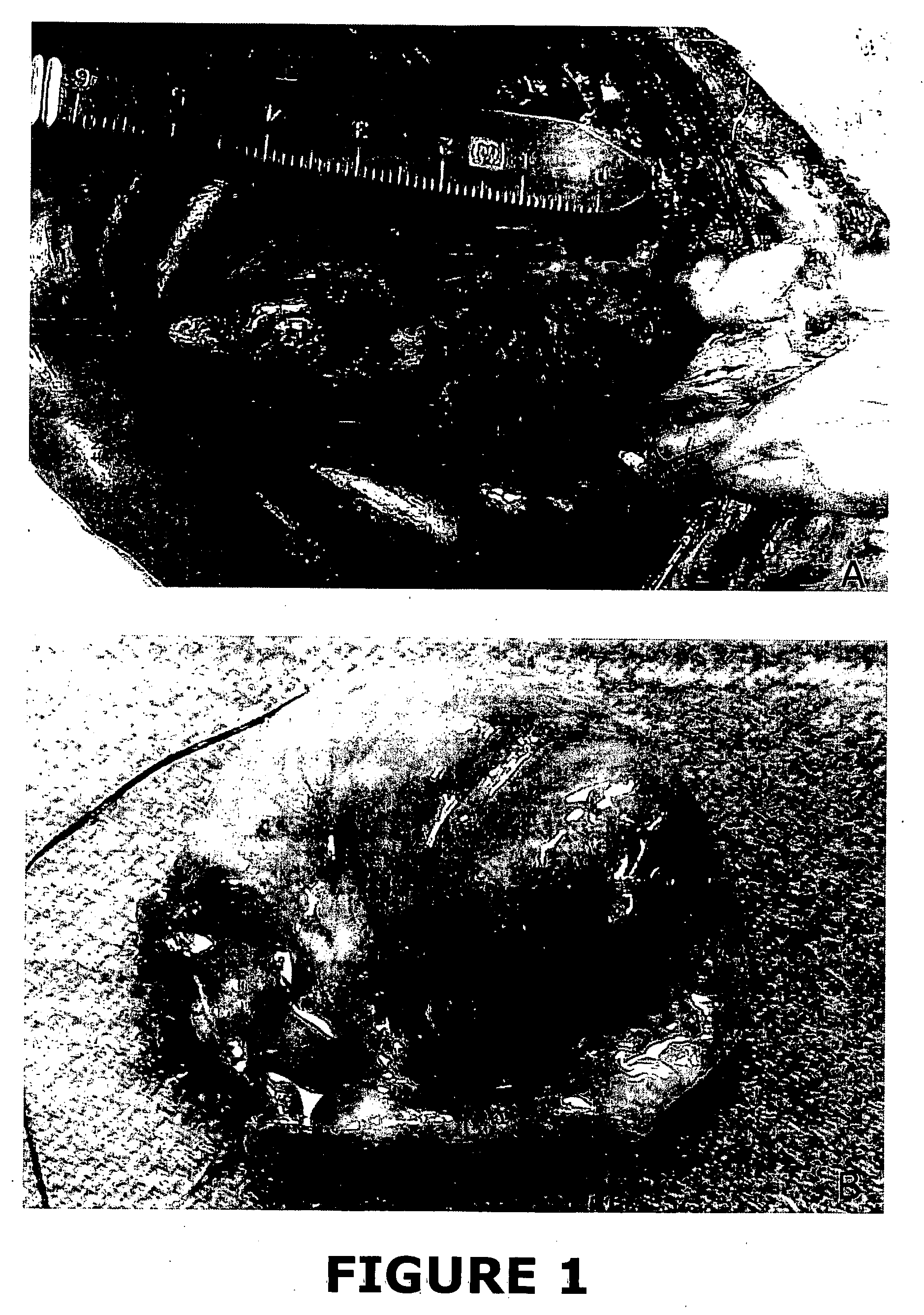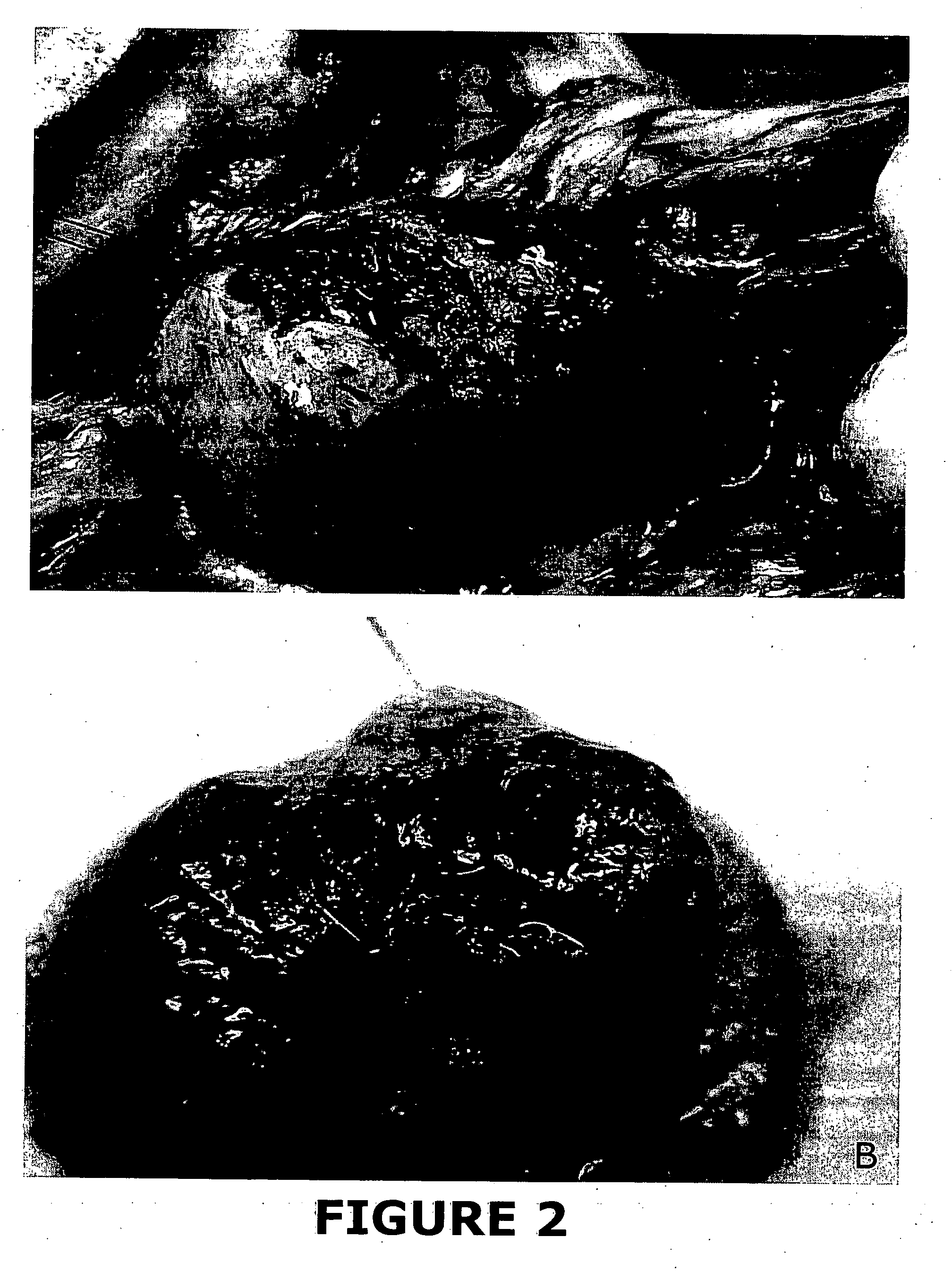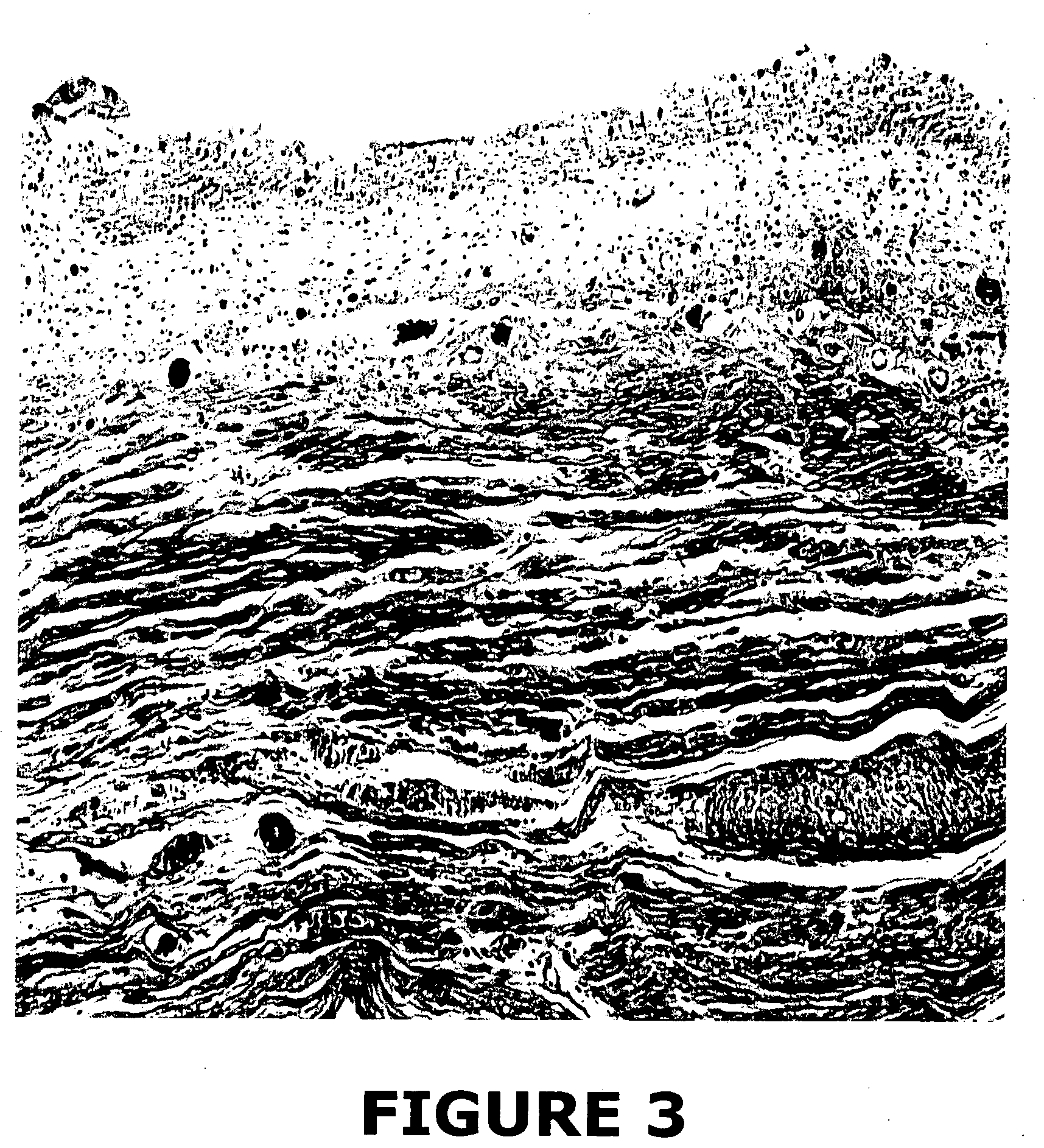Tissue graft compositions and methods for producing same
a tissue graft and composition technology, applied in the field of tissue graft composition and production, can solve the problems of affecting the function of the bladder of children, the monetary cost of treating children with dysfunctional bladders in the health care system runs into millions of dollars each year, and the use of the bowel causes gastrointestinal obstruction, perforation and neoplasia, and other problems
- Summary
- Abstract
- Description
- Claims
- Application Information
AI Technical Summary
Problems solved by technology
Method used
Image
Examples
example 1
Materials and Methods
[0064] Isolation of Distal Heal Segment of SIS.
[0065] The entire small intestine of a pig greater than three years of age (i.e., a sow) was obtained, and the terminal ileum was identified. The bowel was then throroughly cleansed with water. The cleansed bowel was opened on the antimesenteric borders, and the terminal portion of the bowel was inspected. There were clear areas of Peyer's patches, and the areas just adjacent to Peyer's patches were used. These areas were thoroughly stripped of muocsa using a gauze sponge and mechanical force. The serosa muscle layers were also stripped using a gauze sponge and mechanical abrasion. The remaining submucosa layer of the small intestine was placed in 0.1% paracetic acid and 20% ethanol for twelve to twenty-four hours. The material was then thoroughly rinsed and placed in sterile water. Only bowel that was within 300 cm of the terminal ileum and only bowel that was closely associated with Peyer's patches was utilized....
example 2
Materials and Methods
[0075] Tissue Samples.
[0076] Human bladder specimens were obtained from 11 patients 2 to 11 years old with primary vesicouretal reflux undergoing open operations for ureteral reimplantation. None of the patients had clinical evidence of bladder dysfunction or neuropathic bladder. A small portion of the tissue was sent for routine histology and the remainder was used to establish primary cultures. Bladder tissue was obtained and processed in conjunction with approval from the Institutional Review Board.
[0077] Tissue samples from dog bladders were obtained from five adult male beagles (weighing between 11 and 13 kg) undergoing partial cystectomy for bladder augmentation and were used for establishing primary cell cultures. Bladder tissue was obtained and processed in conjunction with approval from the Institutional Animal Care and Use Committee.
[0078] Establishment of Primary SMC and UC Cultures.
[0079] Under the dissecting microscope the bladder mucosa was di...
example 3
Materials and Methods
[0106] The SIS was obtained in a dry form as 10 cm×7 cm rectangles from Cook® Biotech Inc. (W. Lafayette, Ind.). Poly(lactic-co-glycolic) acid (PLGA) was purchased from Absorbable Polymers International (Pelham, Ala.) as a 50:50 monomer ratio with molecular weight of 106 kD and viscosity of 1.05 dL / g. Latex spheres and urea were obtained from Sigma-Aldrich (St. Louis, Mo.). The urea assay kit (catalogue #275-13) was purchased from Diagnostics Chemicals Limited, Oxford, Conn. All chemical reagents used were purchased from Fisher Scientific (Pittsburgh, Pa.).
[0107] Synthesis of Nanoparticles
[0108] PLGA nanoparticles (NPs) were synthesized using a double emulsion solvent evaporation technique. Briefly, 3040 mg of PLGA was dissolved in 1 mL chloroform. 200 μL of double distilled water (DD H2O) was added to the PLGA and sonicated with a probe sonicator model VC60 (Sonics & Materials, Danbury, Conn.) for 30 seconds at 100% of amplitude on a continuous mode. This pr...
PUM
 Login to View More
Login to View More Abstract
Description
Claims
Application Information
 Login to View More
Login to View More - R&D
- Intellectual Property
- Life Sciences
- Materials
- Tech Scout
- Unparalleled Data Quality
- Higher Quality Content
- 60% Fewer Hallucinations
Browse by: Latest US Patents, China's latest patents, Technical Efficacy Thesaurus, Application Domain, Technology Topic, Popular Technical Reports.
© 2025 PatSnap. All rights reserved.Legal|Privacy policy|Modern Slavery Act Transparency Statement|Sitemap|About US| Contact US: help@patsnap.com



